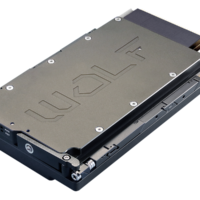Cyber Defence
Cyber defence is as vital to militaries as ballistic protection is for personnel. The advent of the microchip in the early 1960s precipitated the steady trend of defence digitalisation. This manifested as the continuing adoption of computer technology in all aspects of military life. Today’s bases, personnel, platforms, sensors and weapons all depend on computerisation to function. Sea, land and air manoeuvre forces need computerised command and control systems. This is best illustrated by the adoption of computerised Battle Management Systems (BMSs). BMSs move situation reports, orders and accompanying data like imagery or intelligence information around the battlefield.
Such material is no longer carried in physical form as it was prior to the advent of digitisation. This information takes the form of zeros and ones moved around the battlefield at the speed of light. The military’s reliance on digitisation is mirrored in the civilian domain. Governments, commerce and populations all depend on the cyber domain for their daily lives. Few would doubt the extent to which digitisation has revolutionised military affairs. However, this revolution has brought vulnerabilities which must be addressed through cyber defence.
A hostile actor gaining access to a military’s computer networks, software and hardware is a nightmare scenario. In peacetime, the former could glean useful intelligence by accessing such resources. Information could be stolen or altered. The latter could create significant disruption not immediately apparent to the victim. In wartime, the same targets could be overtly or covertly attacked to render them unusable with potentially dire consequences at the tactical, operational and/or strategic levels.
Cyber Protection
The reliance placed on digitisation has triggered the development of cyber defence tactics, protocols and doctrines. These aim to prevent attacks occurring in the first place, minimise the severity or any attacks which do take place and determine who the perpetrator of such attacks may be. The military is ideally placed to enact these approaches. Since the advent of widespread radio communications during the Second World War navies, armies and air forces have placed a premium on securing these. Early efforts included the British Secraphone telephones which used a scrambling device. This made the call unintelligible to anyone eavesdropping. Likewise, Enigma machines used by the German military during the conflict helped protect written communications traffic. The advent of software defined radios in the 1990s allowed elaborate encryption to be used to protect voice and data traffic. Ensuring that digital traffic and computer systems are secure is the next logical step for the world’s militaries. As a result, cyber defence must be built in from the outset for any digitised systems to be used by the military. For example, the French Navy’s ‘Amiral Ronarc’h’ class frigates were developed from the start to include robust cyber defence at all levels.
Internet of Military Things (IOMT)
This trend will deepen in the future. Much is made of the Internet of Military Things (IOMT) replicating the Internet of Things (IOT) evolving in the civilian domain. The IOMT will network all military personnel, systems, sensors, bases, platforms and weapons systems. This ensures they can continually share relevant data either between each other or upwards and downwards to a combat cloud. The combat cloud mirrors civilian cloud computing in its use as a repository of data. The goal of the IOMT is to accelerate the tempo of military operations. This is done by ensuring that relevant information is always available to exactly who needs it. The advent of the IOMT and the combat cloud also introduces potential information vulnerabilities. Cyber defence will be imperative to address these and protect against their exploitation by adversaries.














